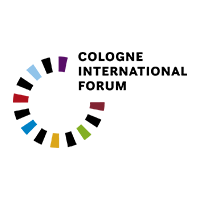In Conversation with Arjang Omrani
»Colonial and capitalist roots caused the weavers’ systematic exploitation and consequently alienation from their craft.«
In this interview, Arjang Omrani discusses the framework of his Innovative Tandem Project, which delves into the systematic marginalization and exploitation of weavers in the production and trade of Persian handmade carpets. Within the context of his interdisciplinary anthropological research, he emphasizes the importance of adopting a multimodal approach in his project.
Cologne International Forum:
Your approach to this project appears to intertwine three unique perspectives: anthropological, artistic, and therapeutic. Would you agree?
Arjang Omrani:
I believe (or at least hope) that the project has therapeutic implications for the weavers, but I cannot claim this definitively. The other factors you mentioned contribute to my view of the project as a multimodal approach to anthropology. This means that anthropological knowledge is a corporeal understanding of living and being. It encompasses how we experience life, how life generates meaning, and how we interact with each other and the world around us. Rather than treating the weavers as mere ‘knowledge production machines’, this approach acknowledges them as living beings with unique stories. This perspective leads to anthropological knowledge that is multimodal, corporeal, and sincere.
How does art influence and shape your project?
This research presentation requires many sensory elements. I consider art a medium that can convey the embedded multimodal sensory knowledge in an academic context, while also serving as a means of self-expression for the weavers.
In what ways does this project serve as a medium for self-expression?
Weavers are encouraged to break the limiting structural patterns given by the market or the traditional pattern orders. Instead, they are urged to employ the diversity of patterns and symbols existing in these patterns, to weave their own story. The goal is to reinterpret and reconstruct patterns, reconnecting the weaver to the craft and transforming the carpet into a storytelling medium. Beyond visual elements, carpets offer tactile qualities, dimensions, and colors that contribute to their narrative potential. While this process involves a learning curve, the aim remains to cultivate the weaver’s independence and reignite their passion for their craft, be it carpet weaving or any other art form.
Could you explain further, what inspired you to initiate this project?
It’s challenging to pinpoint a precise source of inspiration; instead, it’s a gradual process of immersing oneself in the research field, forming research objectives and questions along the way. However, at the core of my work lies an exploration of power deregulation, particularly within societal dynamics, and the potential of anthropological research to address it. For me, it is about what position and responsibility one bears ethically and politically. Do we merely observe neutrally, or do we owe a responsibility to both participants and subjects? This ethical perspective is inherent to my approach. Concurrently, my involvement in weaving and weavers’ projects sparked critical questions, further guiding the development of objectives and the overall project design.
Could you provide further insight into the backgrounds of the weavers participating in the project?
We were not looking for a specific persona – other than, of course, females. Everyone who has been a professional weaver within this intrinsic system of exploitation met the criteria.
Can you elaborate on the gender dynamics at play in this context?
Typically, as wages decrease, the occupation tends to become more female-dominated. Consequently, many men exit the profession, leading to a gradual decline in wages over the years and a perception of the craft as more ‘feminine’ (although some may argue it always has been). I am incredibly grateful to my colleague Tahereh Aboofazeli, who conducted a lot of the fieldwork, as cultural norms prevented some women from interacting with me, limiting my direct engagement with them. Nevertheless, I have also established direct contact with certain weavers, whilst acknowledging the importance of recognizing the gender-specific dynamics within this culture.
In addition to navigating specific societal gender norms, what other challenges have you encountered throughout the course of this project?
Initially, it’s challenging to integrate women into this context and to find individuals willing to engage. The process involves a complete deconstruction of their previous work, which can evoke feelings of insecurity, particularly among those from vulnerable socio-economic backgrounds. There were a handful of individuals that we had to convince to work with us. Moreover, it's essential to encourage weavers to adopt a new perspective regarding their work. Rather than viewing it solely as a product ordered by someone else, they need to recognize it for what it is: a medium for self-expression.
Within the context of an Innovative Tandem Project, how does your work benefit from the international collaboration?
Massively! I owe a huge thanks to Simone Pfeifer, a dear friend and a valuable colleague, for her incredible support throughout the project. She has not only provided intellectual guidance but has also played a key role in organizing the exhibition scheduled for September 2024. Additionally, I want to express my gratitude to the Cologne International Forum for their financial support and assistance in raising public awareness about the project.
Can you tell us more about the exhibition?
I do not want to give too much away, you will have to come and see! [laughs] But in all seriousness, we’re excited to announce that there will be an exhibition showcasing the carpets starting on September 27 at the Rautenstrauch-Joest Museum. We aim to spark a public dialogue about the ethical implications of carpet making. How are we, as consumers, contributing to exploitation, and does this necessitate a change in our purchasing habits? While we may not have all the answers, raising awareness about these issues is a crucial first step.
What’s next?
We would like to cultivate a community-driven experience and deepen connections amongst the weavers to provide greater security in their craft. An initial concept involves establishing an online platform where weavers can connect and share their work but we will see what the future holds.
Thank you!
